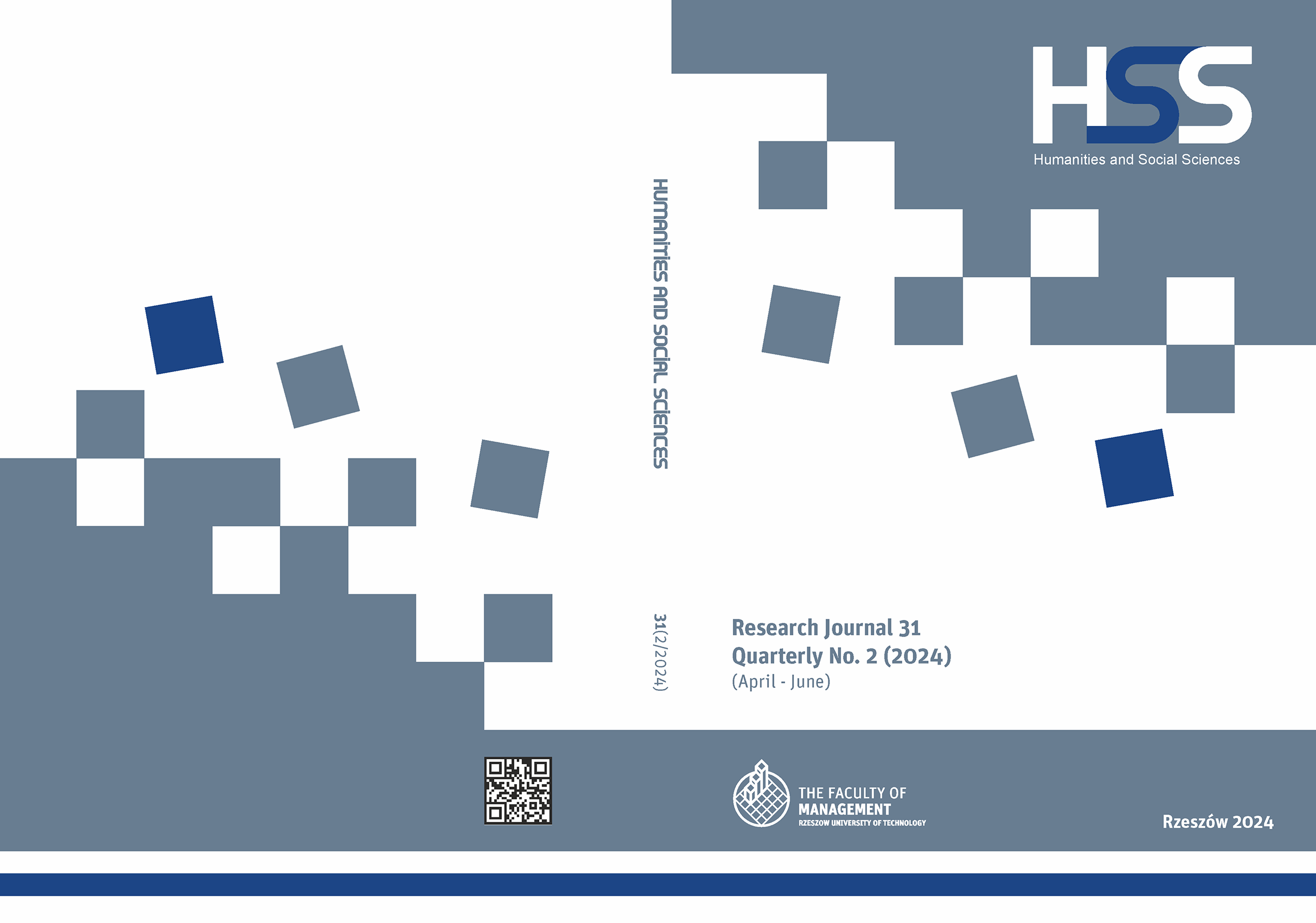Abstract
In 2022, a new police service, namely, the crime-fighting service, was created. The Central Cybercrime Bureau was also established as an organizational unit of the police, which is responsible for recognizing and combating crimes committed using IT systems, ICT systems, or ICT networks and preventing such crimes, as well as detecting and prosecuting their perpetrators. The aim of this paper is to assess the validity of separating the cyber police in the structure of the Polish Police and to analyze its place and role in the cyber security system. Subjects under consideration include the tasks and powers of the new service, problems related to the selection of qualified officers with specialized IT knowledge, and the problem of providing infrastructure enabling the effective implementation of the entrusted tasks. The research methods used in the paper are the dogmatic-legal method and the theoretical-legal method.
References
Jaworski, B. (2023). Dekoncentracja rzeczowa w Policji – potrzeba chwili czy trend zmian? „Przegląd Policyjny”, No. 2.
Kamuda, D. (2018). Wybrane zagadnienia z zakresu cyberprzestępczości [In:] Golonka, A., Trybus, M., ed., Prawo karne w obliczu zmian i aktualnych problemów polityki kryminalnej. Rzeszów: Wydawnictwo UR.
Kamuda, D., Trybus, M. (2023). Cyber crime of reading info obstruction under art. 268 of penal code as a treat to security of the Republic of Poland. „Humanities and Social Sciences”, No. 4/II.
Lakomy, M. (2015). Cyberprzestrzeń jako nowy wymiar rywalizacji i współpracy państw. Katowice: Wydawnictwo Uniwersytetu Śląskiego.
Michalecki, D. (2023). Przestępstwa internetowe – zapobieganie i zwalczanie. „Kontrola Państwowa”, No. 5.
Niczyporuk, J. (2006). Dekoncentracja administracji publicznej. Lublin: Wydawnictwo UMCS.
Oleksiewicz, I. (2017). Rola służb specjalnych w polityce zwalczania cyberterroryzmu RP. „Humanities and Social Sciences”, No. 3.
Pawelec, K. (2022). Centralne Biuro Zwalczania Cyberprzestępczości i jego wybrane uprawnienia. Kilka refleksji. „Cybersecurity and Law”, No. 1.
Pomykała, M. (2021). Zapewnienie bezpieczeństwa wewnętrznego państwa jako zadanie administracji publicznej. Rzeszów: Oficyna Wydawnicza PRz.
Pomykała, M., Polinceusz, M. (2015). Problemy ochrony cyberbezpieczeństwa Rzeczypospolitej Polskiej w dokumentach strategicznych [In:] Współczesne zagrożenia cyberterrorystyczne i bioterrorystyczne a bezpieczeństwo narodowe Polski. Warszawa-Dęblin: Wyższa Szkoła Policji w Szczytnie i in.
Sitek, E. (2022). Cyberpolicja po nowemu. „Gazeta Policyjna”, nr 12.
Taracha, A. (2006). Czynności operacyjno-rozpoznawcze. Aspekty kryminalistyczne i prawnodowodowe. Lublin: Wydawnictwo UMCS.
Wasilewski, J. (2023). Zarys definicyjny cyberprzestrzeni. „Przegląd Bezpieczeństwa Wewnętrznego”, No. 9.
Żywucka-Kozłowska, E., Dziembowski, R. (2023). Wokół definicji cyberbezpieczeństwa. „Cybersecurity and Law”, No. 2(10).
Dwa lata istnienia CBZC. Będzie więcej etatów [Access: 14.03.2024]. Access on the internet: https://cyberdefence24.pl/armia-i-sluzby/dwa-lata-istnienia-cbzc-bedzie-wiecej-etatow.
Enisa threat landscape 2023 [Access: 24.01.2024]. Access on the internet: https://www.enisa.europa.eu/publications/enisa-threat-landscape-2023/@@download/fullReport.
Nowi funkcjonariusze w służbie CBZC [Access: 11.03.2024]. Access on the internet: https://cyberdefence24.pl/armia-i-sluzby/nowi-funkcjonariusze-w-cbzc.
Momot, K. Istota i zakres czynności operacyjno-rozpoznawczych [Access: 11.03.2024]. Access on the internet: https://www.kryminalistyka.org.pl/artykuly/istota-i-zakres-czynnosci-operacyjno-rozpoznawczych/#_ftnref36.
Raport IOCTA 2020 (Internet Organised Crime Threat Assement) [Access: 10.02.2024]. Access on the internet: https://www.europol.europa.eu/cms/sites/default/files/documents/internet_organised_crime_threat_assessment_iocta_2020.pdf.
Statystyki za rok 2022 [Access: 10.02.2024]. Access on the internet: https://instytutcyber.pl/artykuly/statystyki-cyber-za-rok-2022/.
Uzasadnienie rządowego projektu ustawy o zmianie ustawy o Policji oraz niektórych innych ustaw w związku z powołaniem Centralnego Biura Zwalczania Cyberprzestępczości [Access: 11.03.2024]. Access on the internet: https://orka.sejm.gov.pl/Druki9ka.nsf/0/1DC336ABF6F97425C125878E003AC09A/%24File/1742-uzas.docx.
LEGAL ACTS
Directive (EU) 2016/1148 of the European Parliament and of the Council of 6 July 2016 on measures for a high common level of security of network and information systems within the Union (OJ EU L of 2016, No. 194, p. 1).
Act of April 6, 1990 on the Police (consolidated text: Journal of Laws of 2024, item 145).
Act of July 5, 2018 on the national cybersecurity system (consolidated text: Journal of Laws of 2023, item 913, as amended).
Act of December 2, 2021 on special rules for remunerating persons performing cybersecurity tasks (consolidated text: Journal of Laws of 2023, item 667).
Act of December 17, 2021 amending certain acts in connection with the establishment of the Central Bureau for Combating Cybercrime (Journal of Laws of 2021, item 2447, as amended).
Regulation of the Council of Ministers of January 19, 2022 on the amount of ICT benefits for persons performing cybersecurity tasks (Journal of Laws of 2022, item 131).
Resolution No. 125 of the Council of Ministers of October 22, 2019 on the Cybersecurity Strategy of the Republic of Poland for 2019–2024, (MP. of 2019, item 1037).
Order No. 1 of the Commander-in-Chief of the Police of January 12, 2022 on the temporary organizational regulations of the Central Bureau for Combating Cybercrime (Journal of Laws of the Police Headquarters of 2022, item 45).


